Growing Grapes in The Backyard
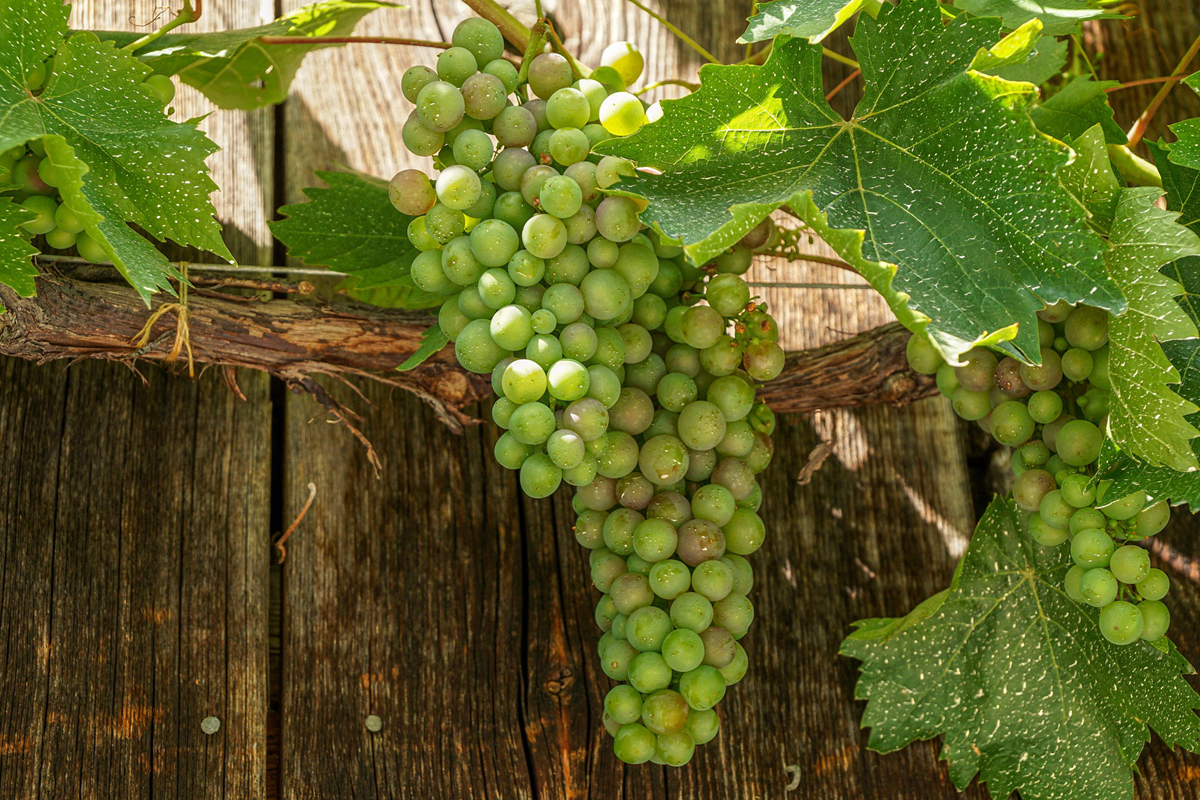
Are you one of those home gardeners that don’t know the three stumbling blocks to successfully growing grapes in your backyard? Don’t worry, you’re not alone.
I have grown grapes successfully under the worst of conditions since 1975 and I can tell you that most of the problems gardeners encounter are because they don’t understand the nature of the beast that they are growing. So let’s look at the problems that I see when people, like you, have me come and analyze what problems they are having growing the backyard grapevine.
The first problem I see is that gardeners want to grow some grapes but they are unaware of the variety they are growing and its growth habit. This leads to many problems from the get go. Each variety has to be treated as an individual. The most common varieties in local nurseries are either Concord types or the European vinifera grape. It all depends on whether you live East or West of the Rockies. In the East, Concord types are common. In the West, especially along the Pacific Coast, you will find the vinifera varieties. Each distinct type have differing growth habits and this influences what you will have to do to maintain them.
Concord types have a more drooping habit of growth. Vinifera types are more upward in their growth habit. What does this mean? It means that each type has to be trained differently because they grow differently. Because the Concord types droop, they must be trained high and allowed to droop downward during the growing season. The vinifera types must be trained low and allowed to grow upward. This takes advantage of the natural growth habit and maximizes the sunlight into the leaves to get the best ripening conditions and yield of grapes.
Each variety varies in how vigorous the growth is. This trait determines the distance between vines when planted. Low vigor vines must be planted closer while high vigor vines need more space. You don’t want high vigor vines planted close as they will run into each other and be hard to maintain over the years. Conversely, low vigor vines planted farther apart will leave gaps of space that will never be filled and you will lose yield because of this.
Gardeners must also be aware of the ripening habits of the variety. Some varieties ripen early and are grown in areas where the growing season is short. Others need much more time to mature. These are late varieties and will need up to 170 days or more to ripen. Then there are those that are in between. You have to select the varieties that are adapted to your growing conditions. Your local nurseryman should be able to help you out there.
One last thing when considering varieties is whether you want to eat them or make wine. Table grapes are to be eaten and wine grapes obviously are to make wine from. The two types are distinct and you can’t make wine from most table grapes as they don’t get high enough in sugar content and the acids are too low to balance the wine. While wine grapes are small berried and seedy, not suited for eating.
The second big problem I see is that the vines are a tangled mess. Vines need maximum exposure to the sun to be able to ripen the grapes. When they are allowed to grow out of control, the vine leaves begin to shade the vine and this allows for disease and insects to set in (some varieties will need spraying throughout the growing season for disease and insect control), and for less than optimal conditions for ripening the fruit properly. Vines must be pruned properly each year for maximum fruitfulness and health.
Pruning means removing 75-90% of the previous year’s growth. This seems drastic but it maintains the health and vigor of the vine. It also means the maximum production of fruit and the best ripening conditions. You can’t ignore pruning the vine each spring. It is a must! There are various styles of pruning. These are dependent on the variety and its growth habit. Some varieties are pruned long and some require short “spur” pruning.
Long pruned vines are not fruitful in the bottom, (basal buds). The maximum fruitfulness on these vines comes from the middle buds on the canes from last year’s growth. Varieties that bear fruit from the bottom, basal buds are spur pruned. Pruning is an art in itself and comes out of a knowledge of how the vine grows. But if not done, the vine will be shaded, get diseased, and overbear, thus weakening the vine. Not pruning will lead to lowered yields and improper ripening. It can also lead to the death of the vine over time. This is especially true in areas with winters. Pruning will instill more winter hardiness because of healthy growing conditions.
Harvesting too early is the last major problem I see from backyard gardeners. People seem to think that as soon as the grapes begin to color that they are ripe. This can be far from the truth. Coloring, known as verasion, occurs weeks before the grapes are actually ripe. Grapes need to attain a good sugar content and acid balance before they can be harvested. Many people harvest their grapes before they have reached this point and are disappointed in the taste or the wine made from these grapes.
Here again, varieties differ in when they are ripe. It is best to use simple qualitative analysis to determine ripeness. The easiest way is to purchase a refractometer to determine the sugar content of the berries. Table grapes can be harvested between 16 and 18% sugar. Wine grapes usually need a sugar content of around 22-24% sugar or more to be harvested and obtain the right alcohol content of the wine.
Growing grapes in the backyard or garden can be a rewarding experience if done correctly. If grown haphazardly, the vines can become overgrown, tangled messes and never ripen properly. Often leading to death of the vine or disappointment at least. You should read as many reference books on the subject as you can before starting out to plant your backyard vineyard. The more you know about the grapes you are planting the better.
The Author:
More information on growing grapes (especially under marginal conditions where grapes are not usually found growing), can be found at Jim’s website. Just visit: http://www.ristcanyonvineyards.com


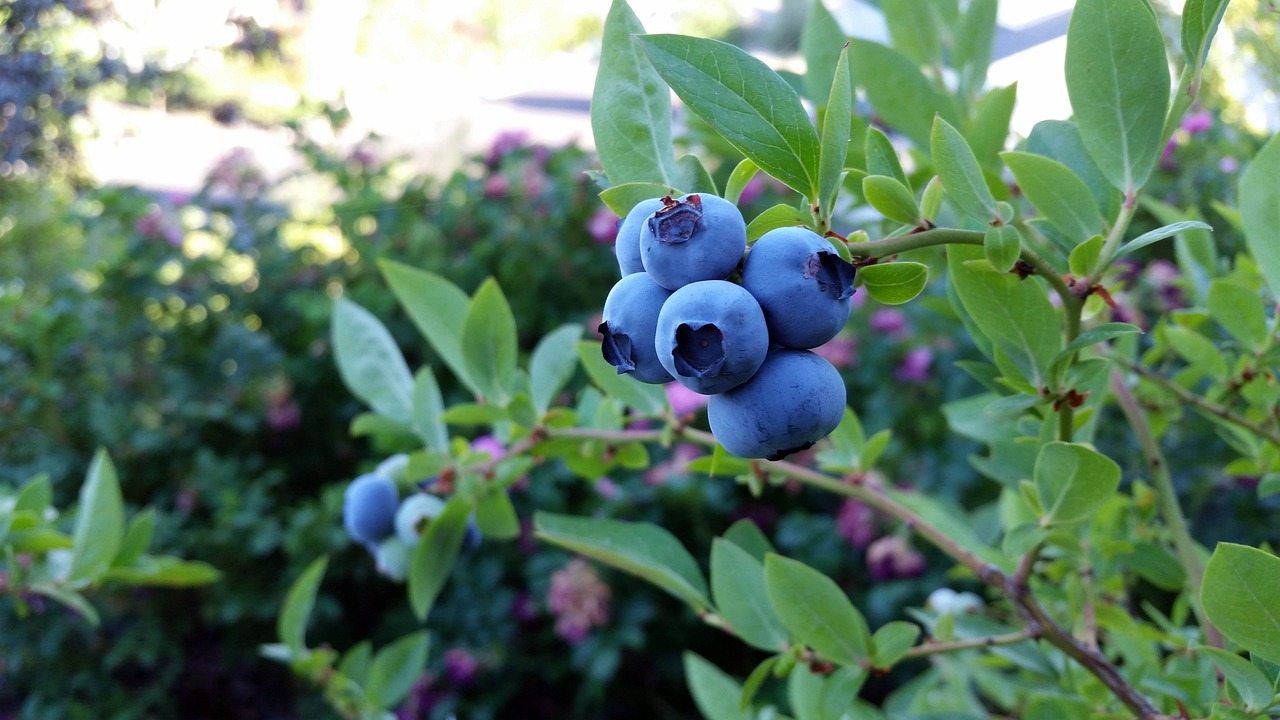
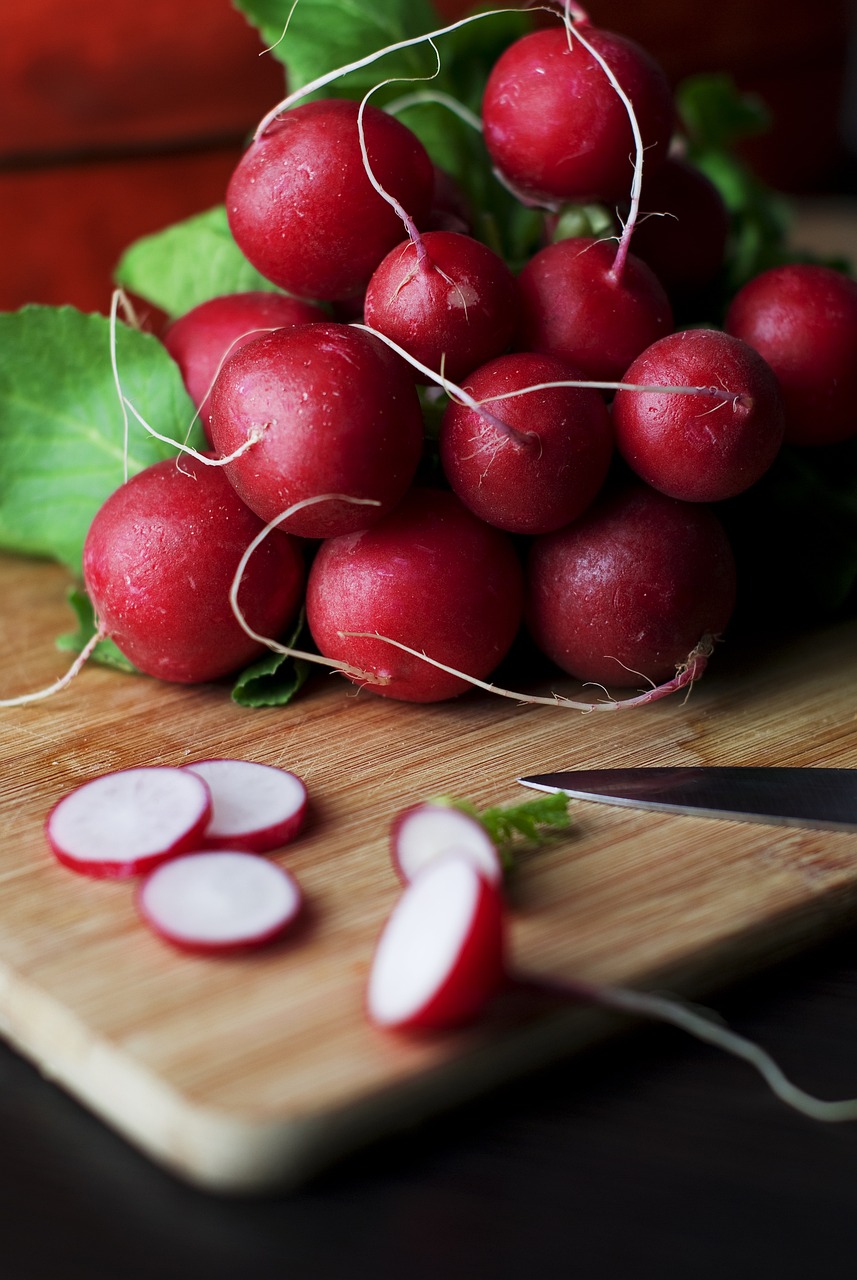
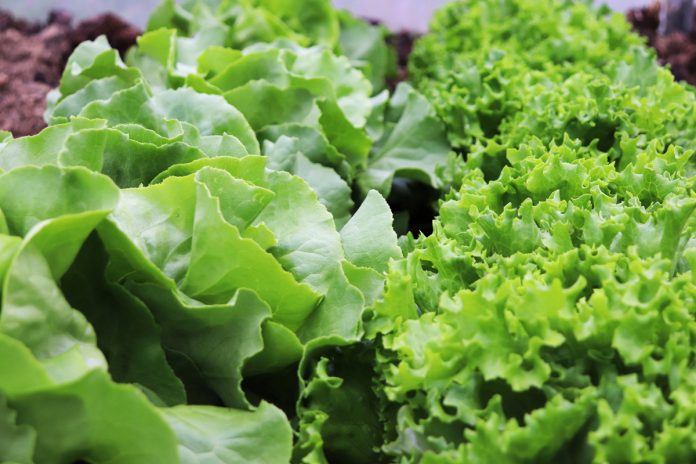
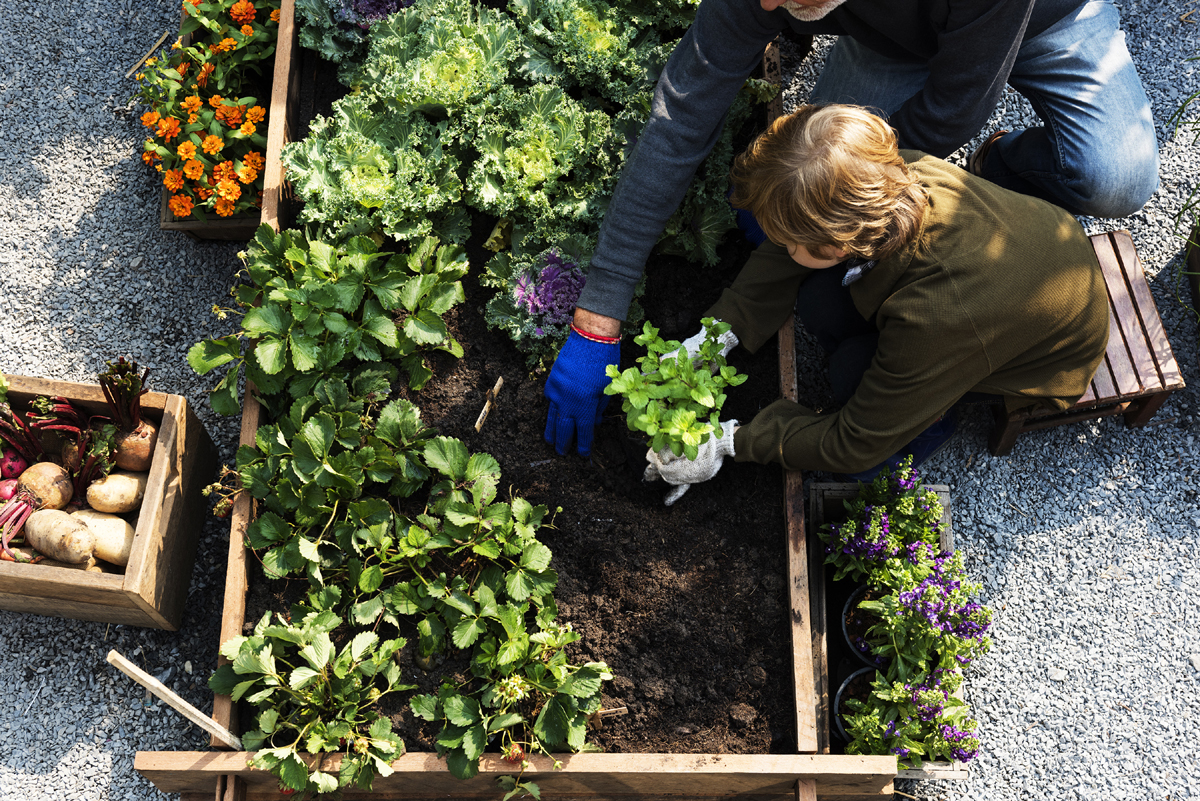

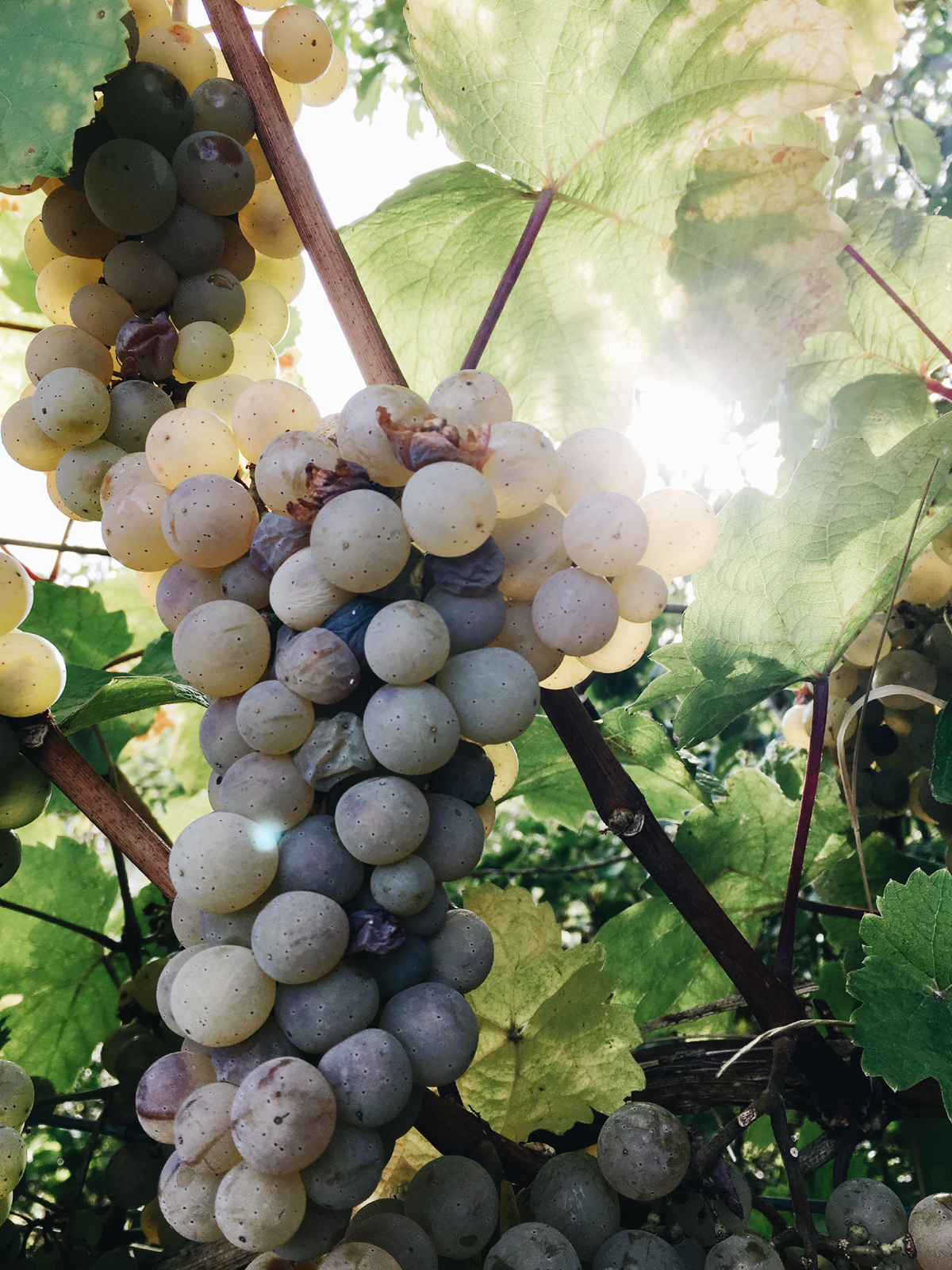
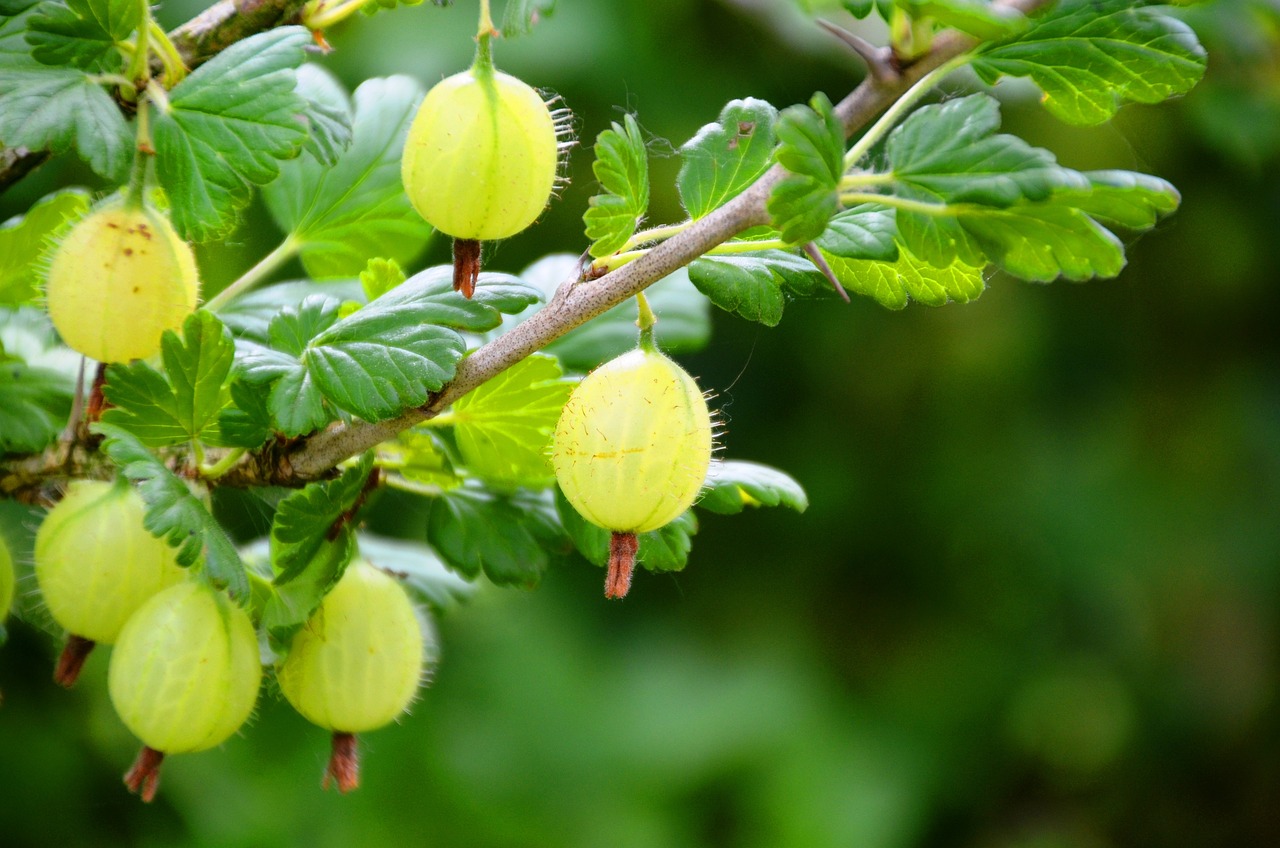
I have a problem – the fruit doesn’t seem to set. The tiny grapes appear then seem to feather off and drop – is there a mineral the grape is needing? I grew grapes on the South side of the house with no problem – took them down planted new plants and have not have success in 6 years because of this fruit drop. Can you give me any suggesions or have you heard of this before? Thank you. Mary
A lack of Phosphorus will cause them to fall off or to stop growing and then they fall off. Compost is full of Phosphorus and Nitrogen which are important when growing grapes. Rock dust (azomite) is my favorite brand. This is made from rocks and ground down into a dust. Spread it around the trunk and work it into the soil a little and water it in. These 2 things alone should help. You could also check the soils PH level. It needs to be a 6.8.
Hello Mary, I’m sorry to hear about your grape problem. There are several reasons why grape plants may experience fruit drop, including nutrient deficiencies, weather conditions, and pests/diseases. Here are a few things you can try to help your grape plants produce fruit:
1. Soil Test: Test your soil to determine if there is any nutrient deficiency. Correct the deficiency with appropriate fertilizers.
2. Watering: Keep the soil evenly moist, particularly during the critical growth stages.
3. Pruning: Proper pruning techniques will help regulate the number of clusters produced by the vine; this will prevent wasting energy on nonproductive fruit.
4. Pests/Diseases Control: Check for pests, such as spider mites, and disease, which may be causing the fruit drop. Treat them accordingly.
5. Pollination: Ensure that the grape plant is receiving adequate sunlight for the bees to carry out effective pollination.
6. Timing: The timing of the pruning plays an integral role in the quality of fruit production. Remember that too much pruning can lead to fruit loss.
I hope these suggestions help you to resolve your grape plant’s fruit drop problem.
Wine made from these grapes have a lot of health benefits for humans, especially the red wine. Thanks for the good information.
You’re welcome! It’s true that red wine made from grapes, particularly those high in antioxidants and polyphenols, may have some potential health benefits when consumed in moderation. Some studies suggest that moderate red wine consumption may help reduce the risk of heart disease and stroke, and may also have anti-inflammatory properties. However, it’s important to note that excessive alcohol consumption can have negative effects on health, so it’s always best to consume in moderation and consult with a healthcare professional if you have any concerns.
My grape vines, planted this spring, are not growing. Leaves are yellowing and there is no growth, Then, bugs started munching on them. Any suggestions? (concord and niagara varieties)
Thank you.
I’m sorry to hear that your grape vines are struggling! Here are a few suggestions that might help:
1. Check the soil: Grapevines prefer well-draining soil with a pH between 5.5 and 7. Soil that is too compact or too alkaline can lead to poor growth and nutrient deficiencies. You may want to have your soil tested to determine if any amendments are necessary.
2. Water regularly: Grapevines need consistent moisture to thrive, especially during the first growing season. Water deeply once a week (unless it rains) and make sure the soil stays moist but not waterlogged.
3. Fertilize carefully: Too much fertilizer can be just as harmful as too little. In general, young grapevines benefit from regular applications of a balanced fertilizer, such as a 10-10-10 blend, until they begin to produce fruit. Follow the manufacturer’s recommendations for application rates.
4. Control pests: It’s important to identify the specific pests that are eating your grapevines so you can choose the appropriate insecticide. For example, grape leafhoppers, Japanese beetles, and spider mites are common pests that can damage grape vines. Organic solutions like neem oil or horticultural soap can also be effective.
5. Prune properly: Grapevines require annual pruning to promote healthy growth and fruit production. Prune in late winter or early spring before buds start to swell. Remove any dead, diseased, or damaged wood, and thin out excess shoots to allow air and light to circulate.
I hope these suggestions help! With a little care and attention, your grapevines should recover and begin to thrive.
I have a large 20×50 feet that is 100 years old the foliage is good but after the grapes start appearing they turn black, need to know what to do for this problem.
my grapes start out good 1urn green than turn brown before they get to ripen, what to do.
please submit reason for grapes turning brown before getting ripe. i live east tn.
There are a few reasons why your grapes may be turning brown before they ripen:
1. Lack of Water: Grapes require adequate water to grow properly. If the plant doesn’t receive enough water, it can cause the fruit to dry out and turn brown.
2. Fungal Infections: Certain fungal infections can cause browning in grapes, especially if they are not exposed to enough sunlight or airflow.
3. Pest Infestations: Pests such as mites, thrips, and beetles can damage the grapes and cause them to turn brown.
Here are some steps you can take to address these issues:
1. Water your grapevines regularly and make sure they are receiving enough moisture. Be careful not to overwater, as this can also be detrimental to the plant’s health.
2. Keep your grapevines well-pruned and expose them to adequate sunlight and airflow to prevent fungal infections.
3. Check your grapevines regularly for pest infestations and use insecticidal soaps or other treatments to eliminate any pests that may be present.
By taking these steps, you should be able to improve the quality of your grapes and help them ripen properly.
Chris,
There are a few things that could be causing the issue of grapes turning black on your vine. Here are some possible causes and solutions:
1. Fungal diseases – Grape vines are prone to several fungal diseases that can cause the fruit to turn black, including black rot, downy mildew, and powdery mildew. To prevent these diseases, it’s important to practice good cultural practices such as pruning, planting in a well-drained area, and spacing the vines apart to allow for air circulation. You can also use fungicides as a preventative measure.
2. Insects – Certain insects can cause damage to grape vines and leave them vulnerable to fungal diseases. For example, the Japanese beetle is a common pest that feeds on grape leaves, leaving the plant open to infection. You can control insect populations by using insecticides or by attracting natural predators like ladybugs and lacewings.
3. Lack of nutrients – If the soil is lacking in certain nutrients such as nitrogen or potassium, the grapes may turn black. You can test the soil to determine which nutrients are deficient and then add appropriate fertilizers to boost the levels.
4. Sunburn – If the grapes are exposed to too much sunlight, they can become sunburned and turn black. To prevent this, make sure the vines are trained to provide ample shade to the fruit.
Overall, it’s important to diagnose the specific cause of the problem before taking action. Consider consulting with a professional or local extension service for more personalized guidance.
We live in northern California and have some grapes growing in the backyard. They grow pretty much in all directions with little control. This year we have small bunches of grapes but they never develop into a full size grape. what are we missing? Do we need to know the varieties to know if they need to be pruned each year?
It sounds like your grape vines could benefit from some pruning and training to encourage larger fruit production. Pruning is essential for grape vines as it helps to control growth, promote fruiting, and prevent diseases.
Identifying the grape variety can be helpful in determining how to prune, but generally, all grape vines benefit from an annual pruning in late winter or early spring when they are dormant.
The first step is to remove any dead or damaged wood. Then, select the strongest and healthiest canes (the long stems that produce fruit) and tie them to a support system such as a trellis or fence. Cut away any extra canes, leaving only 2-4 buds per cane.
Next, remove any lateral shoots (side branches) that emerge from the main cane to ensure that all energy goes into developing the fruit on the selected canes.
It is also important to thin out the grape clusters, removing any small or weak grapes so that the remaining grapes have room to grow and develop properly.
To help your grapes develop into full-sized fruit, ensure that they receive enough water and nutrients, including fertilizer and compost.
With proper care and maintenance, your grape vines should produce larger and healthier bunches of grapes in no time!
Plant and prune yearly. But haven’t seen many grapes. I do have squirrels and birds. Is it possible that they are preventing my grapes to grow. The vines look full and plentiful, If you think it is pest, how do I prevent them from destroying my grapes.
Yes, it’s possible that squirrels and birds could be preventing your grapes from growing. Squirrels love to munch on grapes, and birds are notorious for stealing ripe fruit. There are a few things you can do to protect your grapes:
1. Cover the vines with netting – This will prevent birds from getting to the grapes. Be sure to secure the netting tightly so that squirrels can’t get in either.
2. Install scare devices – You can set up fake owls or snakes to scare away birds and squirrels. Alternatively, you can use reflective tape or shiny objects to deter birds.
3. Use repellents – There are many natural repellents that you can use to keep squirrels and birds away from your grapes. Some popular options include hot pepper spray or essential oils like peppermint or eucalyptus.
4. Harvest grapes early – If you’re having trouble with pests, consider harvesting your grapes a little earlier than usual. This will give you a chance to enjoy them before the squirrels and birds can get to them.
Remember to regularly prune your vines as well as this will promote healthier growth of your grapevines and increase fruit production. Good luck!
We have Thompson and Concord grape vines, about 5 yrs old.each season, instead of new growth coming off the main stock, there is a mass of new growth coming from the base of the plant, and the stack is dead.
Please advise.
It sounds like your grape vines may be suffering from root rot or crown rot. These are fungal diseases that can cause the roots and/or base of the plant toIt sounds like you may be experiencing a phenomenon called “suckering.” Suckers are shoots that grow from the base of the plant, usually below the graft union (if applicable). They can be caused by stress factors such as drought, disease, or damage to the main stem.
To address this issue, first, remove any dead wood from the main stem. Then, prune back the suckers to just a few strong ones. You want to keep one or two suckers per vine to help with overall vigor and fruit production but too many will take energy away from the main trunk and reduce the quality of your fruit.
Providing adequate water and fertilizer, as well as practicing good pest management and keeping the vines well-pruned can help prevent suckering in the future. Additionally, if you notice any damage or signs of disease on your vines, try to address the issue quickly to prevent stress on the plant that could lead to suckering.
am wondering why my concord grapes (3 years old) are not turing purple. It is October 9 and they have not turned purple yet although some of them have and fell off. We live in zone 5 in Central New York. We were so excited to see all the clusters but dissapointed to see they are not turning the usual purple color.
Any ideas or comments will be greatly appreciated.
remove some of the leaves shading the grapes. Sunlight causes them to ripen
There could be several reasons your grapes are not turning purple. Here are a few possible explanations:
As Jim mentioned, grapes need a lot of sunlight to ripen properly. If your vines are shaded by trees or buildings, it may be hindering the ripening process.
Grapes need warm temperatures to ripen properly. If there have been cooler temperatures in your area recently, this could be why they are not turning purple.
Grapes need certain nutrients to ripen properly. If your soil is lacking in these nutrients, it can affect the color and taste of your grapes.
Certain pests and diseases can also affect the ripening process of grapes. Check your vines for signs of infestation or infection.
If none of these suggestions seem to be the issue, it might be worth reaching out to a local gardening expert or grape grower to see if they have any additional advice.
Can you use plastic coated wire for growing grapes one of the pictures above looks like the wire is coated
Robert
Yes, you can use plastic coated wire for growing grapes. In fact, it is a common option for trellising grapes because it provides a smooth and durable support system for the vines. The plastic coating on the wire helps to protect against rust and corrosion, which can prolong the lifespan of the trellis. However, when using plastic coated wire for grape trellising, it’s important to choose a wire that is strong enough to support the weight of the growing vines and grapes.
I have a small orchard and I want to plant grapes but I am in an almost zone 2 area, is their a variety that can stand these winter temps. I Honeyberries, raspberries, Nanking cherry that do fine here. Just the grapes I am not willing to gamble on.
hi Douglas…
Yes, there are grape varieties that can tolerate cold temperatures down to zone 2. Some examples include: Marquette, Frontenac, and La Crescent. These grapes are known for their winter hardiness and ability to withstand low temperatures. Valiant grapes (Fredonia X V. riparia) is also suitable for zone 2. They can withstand -50F (-45C) or more. Tastes similar to concord grapes.
I would recommend contacting your local nursery or agricultural extension office for advice on which varieties may be best suited for your specific region. Additionally, it is important to properly care for your grape vines during the winter months to ensure their survival. This includes protecting them from extreme cold, applying proper mulching and pruning techniques, and choosing a suitable location with good drainage.
Hi,
Could you tell me the best pruning & training system for Somerset Seedless as well as Reliance? I’m quite new to grape growing & am completely lost on things such as “basal eye fruit bearing.”
Thank you!
Nicole
For Somerset Seedless and Reliance grape varieties, the best pruning and training system is the four-arm Kniffin system. It is a simple and easy-to-maintain system that allows for good sunlight penetration into the canopy and good air circulation.
Here are the steps for pruning & training your grapevines using the Kniffin system:
1. In the first year of planting the grapevines, let them grow without pruning to establish a strong root system.
2. In the second year, select the strongest shoot and train it to a wire or stake. Cut back all other shoots to two buds.
3. In the third year, select four shoots from the trunk to train as the main arms. These should be evenly spaced around the trunk and trained in opposite pairs. Cut back all other shoots to two buds.
4. In subsequent years, continue to maintain four main arms and prune the shoots that emerge from them. Prune all side shoots, except for those near the base of each arm, back to one or two buds.
5. During the growing season, pinch off any lateral shoots that grow on the arms or between the arms, to encourage fruiting spurs to develop.
Regarding basal eyes, they are buds that are located at the base of a new shoot, just above the soil level. Basal eyes are important for fruit production because these buds can give rise to new shoots. When pruning, make sure to leave some basal buds to encourage new shoot growth.
I hope this information helps you get started with pruning and training your grapevines. Good luck and happy growing!
I live in orlando Florida. I have a beautiful scuppernong grape vine. It is full of grapes that are dropping before getting ripe in mid July. It also did this last year. Have not cut the vines back for a couple of years
There are a few possible reasons why your scuppernong grape vine is dropping grapes before they ripen. Here are some common causes and solutions:
1. Pest infestation: Grape berry moth is a major pest for grapes in Florida and can cause premature fruit drop. Look for small, discolored holes on the fruit and remove any infested grapes. You can also use an insecticide to control the pests.
2. Lack of water: Grapes require consistent moisture throughout the growing season to produce quality fruit. Make sure your grapevine is receiving enough water, especially during dry spells.
3. Nutrient deficiency: Nutrient imbalances can cause issues with fruit development. Be sure to fertilize your grapevine properly and have the soil tested to determine any specific deficiencies.
4. Overcrowding: If your grapevine is overcrowded, it can lead to shading and poor air circulation, which can cause fruit to drop prematurely. Prune the vines to improve airflow and sunlight penetration.
5. Disease: Various fungal and bacterial diseases can affect grapevines, causing premature fruit drop. Make sure to monitor your grapevine for any signs of disease, and treat with appropriate fungicides if necessary.
It’s also worth noting that scuppernong grapes tend to ripen in August or September, depending on your location and climate. So, the fruit dropping in mid-July may not necessarily be a cause for concern. However, if the grapevine is dropping a significant amount of fruit, there may be an underlying issue that needs to be addressed.
hi, I was wondering about the different climate zones. Why I live in zone 17 in the farmers almanac and live in zone 9 in the Sunset magazine. I actually live on the southern Oregon coast but what I am trying to grasp is why I have a different zone for every publication and have not moved an inch. So prune the grapes in the spring? thank you
hi Debbie not sure why the difference in climate zones. I would base my decisions on the USDA plant hardiness guide. It’s very specific to your area and will guide you what plants would do best for your area. Sunset nursery sounds like they are matched to your zone though. So depending on the type of grapes you have, it will indicate the best pruning time, usually it’s spring.
http://www.plantmaps.com/interactive-oregon-2012-usda-plant-zone-hardiness-map.php
I would like to start growing grapes? My grandmother always grew concord grapes to make jelly. I would like to do the same. Can I plant them now? (September) I live in zone 6b. When is the best time to plant them? Thanks!
It’s great that you’re interested in growing grapes and continuing your grandmother’s tradition of making jelly! Here are some answers to your questions:
Firstly, September is not the best time to plant grapevines in zone 6b as it is getting late in the growing season. The best time to plant grapevines is in early spring (March-April) or in fall (October-November), when the soil is still warm from summer but the weather is cooler, which reduces transplant shock.
Secondly, Concord grapes are hardy and can grow well in zone 6b. They are known for their strong flavor and high sugar content, making them ideal for jelly making. When selecting a site for planting, choose an area with well-drained soil and full sun exposure. Grapevines require at least 8 hours of direct sunlight per day to produce fruit and maintain good health.
When planting grapevines, make sure to dig a hole deep enough to accommodate the roots and add compost or organic matter to improve soil structure and fertility. Space the vines about 6-8 feet apart and provide support such as a trellis or fence for the vines to climb.
Lastly, keep in mind that grapevines can take several years to establish and produce fruit, so be patient and maintain good care (watering, pruning, fertilizing, etc.) to ensure healthy growth of your vines.
I hope this information helps you get started with planting your grapevines and continuing your family’s tradition of making Concord grape jelly!
This is an excellent post! I find grapes really difficult to grow and take care of. I bought a house in the countryside of Spain and the yard had a lot of different fruit trees including few different sorts of grape. I don’t know anything about growing grape or in a matter of fact, how to maintain a garden as a general. This year the grape was not really good but I am determined to succeed with it next year! Thank you for the useful information and tips!
You’re very welcome! I’m glad to hear that you found the information helpful. Growing grapes can be a bit challenging, but with some patience and care, you can definitely succeed and enjoy a bountiful harvest of delicious grapes. And don’t worry if this year’s crop wasn’t great – gardening is a learning process and it often takes a few seasons to figure out what works best for your specific climate and conditions.
Here are a few more tips to help you succeed with growing grapes:
– Prune your grapevines properly: Grapevines require regular pruning to promote healthy growth and fruit production. In general, you’ll want to prune your vines in late winter or early spring before new growth begins. Remove any dead or damaged wood, as well as any shoots or buds growing from below the graft union (if your vines are grafted). Aim to leave 2-3 buds per spur, and thin out excess fruit clusters to improve quality.
– Provide adequate water: Grapevines need regular watering, especially during hot, dry periods. Make sure to water deeply and infrequently, rather than frequently and shallowly. Aim to provide 1-2 inches of water per week, either through rain or irrigation.
– Keep pests and diseases under control: Grapevines are susceptible to a variety of pests and diseases, including powdery mildew, downy mildew, and grape phylloxera. Be vigilant in monitoring your vines for signs of problems, and take action promptly if you notice any issues. Cultural controls such as proper pruning, spacing, and sanitation can help prevent some common problems, while chemical controls may be necessary for more severe infestations.
I hope these tips help you get started on your grape-growing journey, and that you enjoy many delicious harvests to come!
we recently moved to the south Okanagan BC. The new place has three grape vines, small purple seeded fruit.
My question is ,when do we stop watering the vines so they can go dormant for the winter. Your site was very helpful in telling when and how to prune, but am finding it difficult to find an answer to my question.help!
Great question! In the south Okanagan region of BC, the grapevines will typically start to go dormant naturally in late fall or early winter as temperatures begin to cool down. At this point, you can start to gradually reduce the amount of watering you give the vines to help them prepare for dormancy.
However, it’s important to keep in mind that you don’t want to completely stop watering your grapevines until they have fully gone dormant. This is because the roots of the vines still need some moisture to stay healthy and alive throughout the winter.
As a general rule of thumb, you can start reducing the frequency of your watering in mid to late fall, and continue to gradually reduce it as temperatures get colder. By late fall, you may only need to water your grapevines once every week or two. Then, once the vines have fully lost their leaves and the temperatures have consistently stayed below freezing for a few weeks, you can stop watering altogether.
How do I keep the birds from eating my grapes before they mature?
Birds can be a common problem for grape growers, but there are several methods you can use to deter them from eating your grapes before they are ripe. Here are a few ideas:
1. Netting: Covering your grapevines with bird netting is an effective way to prevent birds from accessing your fruit. Make sure the netting is tightly secured around the vines to prevent any gaps and ensure that birds can’t get inside.
2. Visual deterrents: Hanging reflective tape or shiny objects like CDs or aluminum foil streamers near your grapevines can scare birds away. You can also use scarecrows or fake predatory birds to help keep birds at bay.
3. Sonic deterrents: Some people have success deterring birds with sonic devices that emit loud noises or distress calls. There are many different types of these devices available, so do some research to find one that will work for you.
4. Harvest early: Consider harvesting your grapes a little earlier than usual, before birds have had a chance to discover them. This might mean sacrificing a bit of flavor or sweetness, but it’s a good option if other methods haven’t been successful.
5. Alternate food sources: Setting up a bird feeder or birdbath away from your grapevines can lure birds away from your crop. This method works best if you start providing an alternate food source early in the growing season, before birds have developed a taste for your grapes.
I hope these ideas are helpful! Good luck protecting your grape harvest.
I am looking for a local CT nursery to purchase grape vines about 2 years old.
There are many nurseries in Connecticut that sell grape vines. Here are a few options to consider:
1. White Flower Farm – located in Litchfield, CT, this renowned nursery sells a variety of grape vines, including popular varieties like Concord and Niagara.
2. Gilbertie’s Herb Gardens – located in Westport, CT, this nursery offers a wide selection of grape vines, including seedless varieties like Himrod and Venus.
3. Sam Bridge Nursery & Greenhouses – located in Greenwich, CT, this nursery sells a variety of fruit plants, including several types of grape vines.
4. Broken Arrow Nursery – located in Hamden, CT, this nursery specializes in hard-to-find and unusual plants, including a selection of grape vines.
5. Tripple Brook Farm – located in Southampton, MA (just over the Connecticut border), this nursery offers a large selection of organically grown grape vines, including many heirloom and rare varieties.
I hope this helps you find the right nursery to purchase your grape vines from. Happy planting!
I HAVE BEEN TRYING TO GROW GRAPES FOR 5 YEARS NOW . ALL I SEE IS VINES ALL OVER THE PLACE. BUT NO GRAPES. SHOULD I CUT ALL OF THE VINES OFF UNTIL NEXT YEARS? I HAVE BLACK AND GREEN GRAPES.SHOULD I HAVE THE GRAPES 4 OR 6 FEET OFF THE GROUND NOW THEY ARE 2 FEET OFF THE GROUND.
It sounds like you are experiencing a common problem with grapevines. Here are a few tips that may help you get grapes next year:
1. Prune your vines: Grapevines need to be pruned every year to produce fruit. Late winter/early spring is the best time to prune. Remove old, dead, or weak wood as well as any lateral shoots that grew from the main stem so that only the strongest and healthiest can develop into fruiting canes.
2. Train your vines: Grapes need to be trained along a trellis system for maximum yield. You can use wire trellis or wooden poles and wires. The ideal height of the fruiting wire is between 4 and 6 feet high. If your vines are currently only 2 feet off the ground, you can either extend the trellis higher or prune the vines back and start training them from the desired height.
3. Fertilize regularly: Grapes thrive in nutrient-rich soil. Consider using a balanced fertilizer carefully following the manufacturer’s instructions.
4. Control pests and diseases: Common grapevine pests include Japanese beetles, mites, and leafhoppers. Diseases like powdery mildew, black rot, and downy mildew can also affect your crop. Consult with a local nursery or agriculture extension office for plant-safe pest control options.
5. Be patient: Grapes typically take three to five years to begin fruiting, and the first few crops may be small. Be persistent and continue to care for your vines, and they will eventually produce a full crop.
I hope these tips help you get the grapes you’ve been waiting for!
MY FRUIT TREES ARE NOT BARING FRUIT. WHAT IS THE PROBLEM? I HAVE PEACHES, PEARS,PLUMS AND APPLE TREES. THEY PRODUCED A SMALL AMOUNT OF FRUIT ONCE I THREE YEARS, WHAT CAN I DO ABOUT IT.
There could be several reasons why your fruit trees are not producing fruit. Here are a few things to consider:
1. Lack of Pollination: The majority of fruit trees need to be pollinated by bees and other insects. If your yard doesn’t have enough pollinators, then there may not be enough cross-pollination occurring for the fruit to develop.
2. Poor Pruning: Fruit trees need to be pruned properly to encourage healthy growth and fruit production. If you haven’t pruned your trees correctly or at all, it can result in reduced fruit production.
3. Lack of Nutrients: Fruit trees require adequate nutrients to produce fruit. Soil that is deficient in essential nutrients like nitrogen, phosphorus, and potassium can result in reduced fruit production.
4. Pest and Disease Control: If your fruit trees are plagued by pests or diseases, it can affect their ability to produce fruit.
5. Improper Watering: Insufficient watering or over watering can also lead to poor fruit production.
To address the issue, you should consider getting a professional to examine the trees and recommend steps to take. It could require corrective pruning, fertilizing, treatment against pests or diseases, or even planting companion plants that attract pollinators.
Several people have asked a similar question. I really was hoping someone had replied to them because I have had the same problem the last 3 years. The grapes start off great them turn brown when they get about 1/4 inch in diameter? What seems to be the problem? Is there anybody that can help any of us? I’ve had these vines about 15 years Concord and Niagara.
The issue with your grapes turning brown at 1/4 inch diameter could be due to a few reasons. One possibility is poor pollination which can lead to seeds not developing properly and causing the grapes to turn brown. Another possibility could be disease or insect infestation. Grape berries are vulnerable to infection by various fungi and bacteria, and insect pests like grape berry moth can also cause damage.
To address this issue, you should consider consulting with a local agricultural extension service or a professional horticulturist to check for signs of disease or pest infestation. They will be able to recommend appropriate control measures such as fungicides or insecticides to manage the problem. In addition, make sure that your vines are getting adequate water, sunlight, and nutrients to promote healthy growth and fruit development. Proper pruning can also help to improve airflow and sunlight to the fruiting clusters.
Have 2 Thompson seedless grape plants & both plants are growing well with several bunches of grapes but turn purple before ripening. If I taste the fruit before they turn to a purple color from green they are sour. They taste fine but I thought they were to be green?
I’m in the San Diego Ca area.
Thompson Seedless grapes are a green grape variety and are typically harvested when they are fully ripe, which is when the grapes have turned a light greenish-yellow color. The purple coloration you are seeing may be an indication that the grapes are not ripening properly or that they are experiencing some kind of stress, such as drought or disease. It is also possible that the plant has produced a sport, or a genetic mutation, that results in purple grapes. These grapes may be edible, but they are not typical for this variety.
To ensure that your grapes ripen properly, make sure that they are getting enough sunlight and water. Grapes require full sun exposure to ripen properly, so make sure they are not shaded by other plants or structures. Additionally, make sure that the soil is well-drained and that the plants are not being over watered or under watered.
If you continue to see purple grapes, you may want to consult with a professional horticulturist or extension service to determine if there is an underlying issue that needs to be addressed. They may be able to provide further guidance on how to manage the problem and ensure that your grapes ripen properly.
I have a vine growing in my back yard and some purple grapes are growing. Are they poisonous?
It’s best to err on the side of caution and not consume them. You can take a sample of the grapes to a local agricultural extension service or a professional horticulturist for identification and advice.
MY Dad is from Louisiana and thinks I could grow 1 muscadine and several scuppernog vines I live in the PNW North area Arlington. Is this possible and if so do you know where I can buy these two here?
It’s possible to grow muscadine and scuppernong grapes in the Pacific Northwest, but they may require special care and attention due to the different climate and growing conditions compared to their native southeastern US.
In terms of where to buy these grape varieties in your area, you can try contacting local nurseries and vineyards to see if they carry them or can order them for you. You can also search online for nurseries that specialize in fruit trees and vines, as well as for seed and plant suppliers that offer muscadine and scuppernong grape plants.
When selecting a site for your grapevines, be sure to choose a location that gets plenty of sunlight, has well-draining soil, and is protected from strong winds. It’s also important to provide proper support for the vines, such as trellises or arbors, as they can become quite large and heavy as they mature.
Finally, keep in mind that muscadine and scuppernong grapes have different ripening times and flavor profiles, so it can be fun to grow both types to enjoy a variety of grape flavors throughout the growing season.
In reply to Donna Schlesier.
remove some of the leaves shading the grapes. Sunlight causes them to ripen
I am using purple liquid dye to dye a white polyester dress. I would like the dress to turn out more of a lavender color. Any tips on how I can achieve this color?
To achieve the lavender color you want, you can follow these steps:
1. Fill a large container with hot water and add the purple liquid dye according to the instructions on its packaging.
2. Test the dye on a small piece of fabric to determine the strength of the dye and how long it will take to reach the lavender color you want.
3. Once you have determined the strength of the dye, add the white polyester dress to the container of dye.
4. Stir the dress around in the dye mixture for about 10-30 minutes or until it reaches the shade of lavender you desire.
5. Remove the dress from the dye mixture and rinse it under cold water until the water runs clear.
6. Wash the dress using a mild detergent to remove any excess dye.
Keep in mind that the final color of the dress may differ slightly depending on the original shade of white polyester and the strength of the dye. It is always best to test a small area before dying the entire garment. Also, be sure to protect your hands and work area from the dye as it can be messy and can stain surfaces.